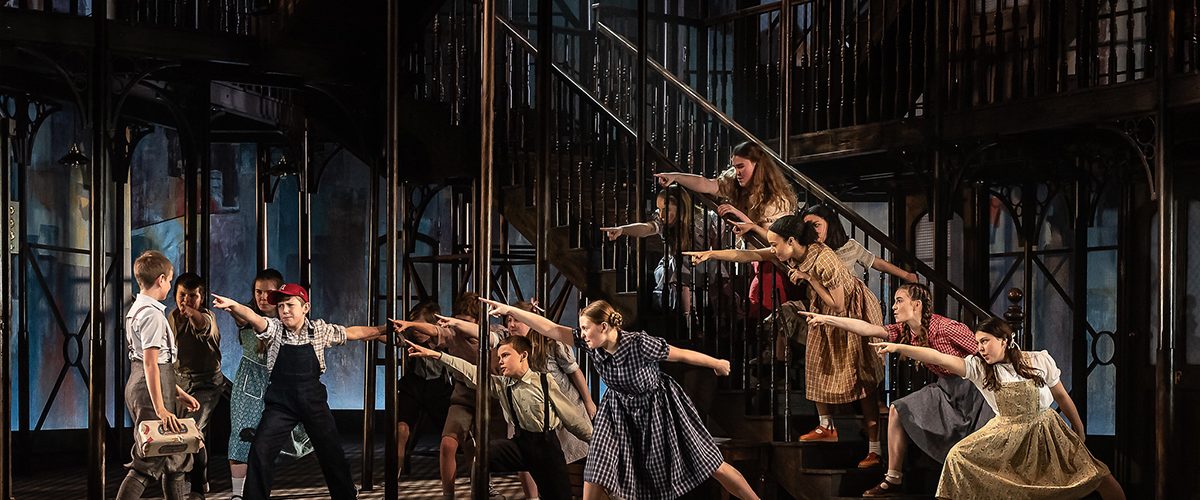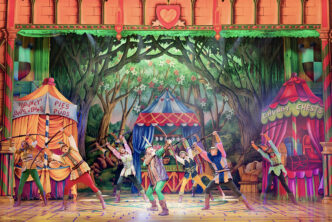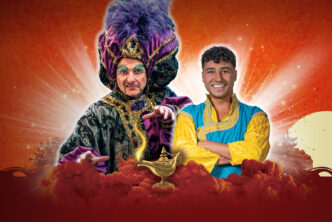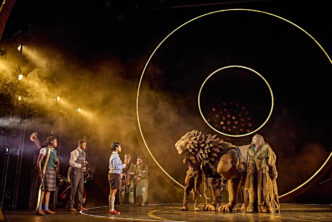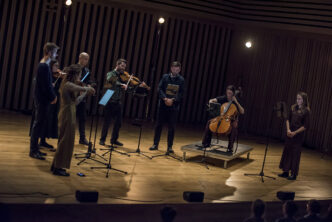Kurt Weil’s dramatic opera, Street Scene was awarded the inaugural Tony Award for Best Original Score in 1947. It’s based on a play by Elmer Rice and charts the events that take place over two days in the slums of a New York district.
The main thrust of the piece is rebirth or renaissance. Opera North’s epic production opens with three neighbours overwhelmed by the heatwave currently sweeping the city. The heatwave is a metaphor for the brewing tension that’s scheduled for the second act of the performance.
Director Matthew Eberhardt skilfully creates a confined and claustrophobic space where immigrants, from all walks of American life, mark the milestones of human existence. Within its walls there’s a pending funeral; a couple are expecting their first child; a graduation celebration; an eviction from the tenement block (for late rent payments); and rumours of an affair.
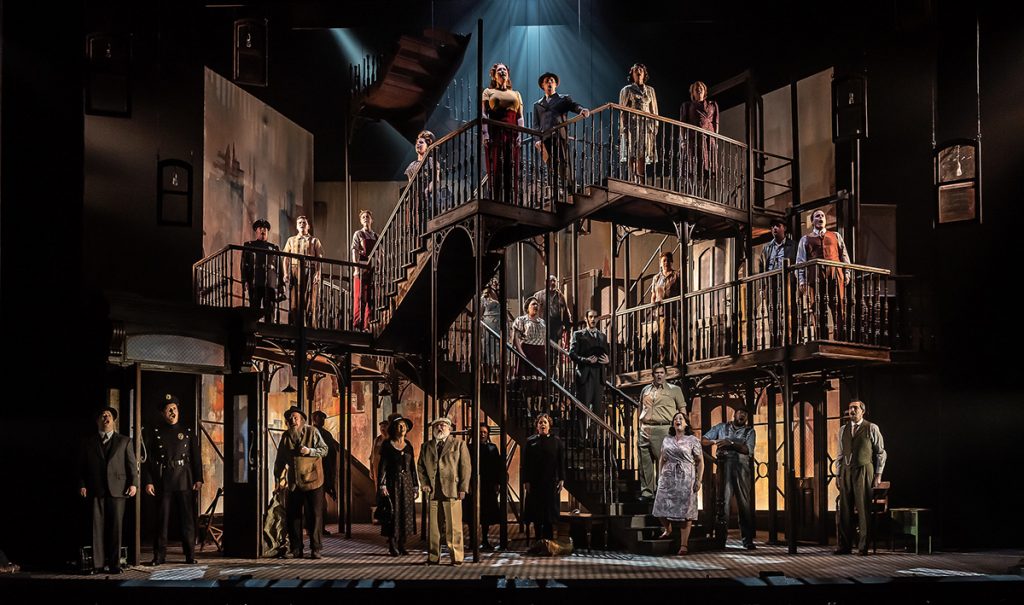
The Maurantt’s are the central characters of the piece. Anna (Giselle Allen) and Frank Robert Heywood) who exist in a loveless marriage have a daughter, Rose (Alison Langer) who is pursued by three suitors. Sam Kaplan, who’s played by Alex Banfield, is the archetypal ‘boy next door’, bookish and introverted; Harry Easter (Quirijn de Lang) delivers an chilling portrayal of how ‘men with power’ seek to use that influence to gain sexual gratification; and Vincent Jones (Christopher Naire) – Naire’s a brute who’s not afraid to use force or foul language to get what he wants.
The original play was set in and around the steps of a tenement block and had a multitude of characters all with interweaving storylines. It was perceived as so complex in its delivery that it was deemed akin to watching improvisation on stage. Weil’s decision to retell this story and adapt it to music stemmed from his desire to reinvent the American opera to develop a unique ‘dramatic opera’ that was both a ‘commercial and an artistic’ hit.
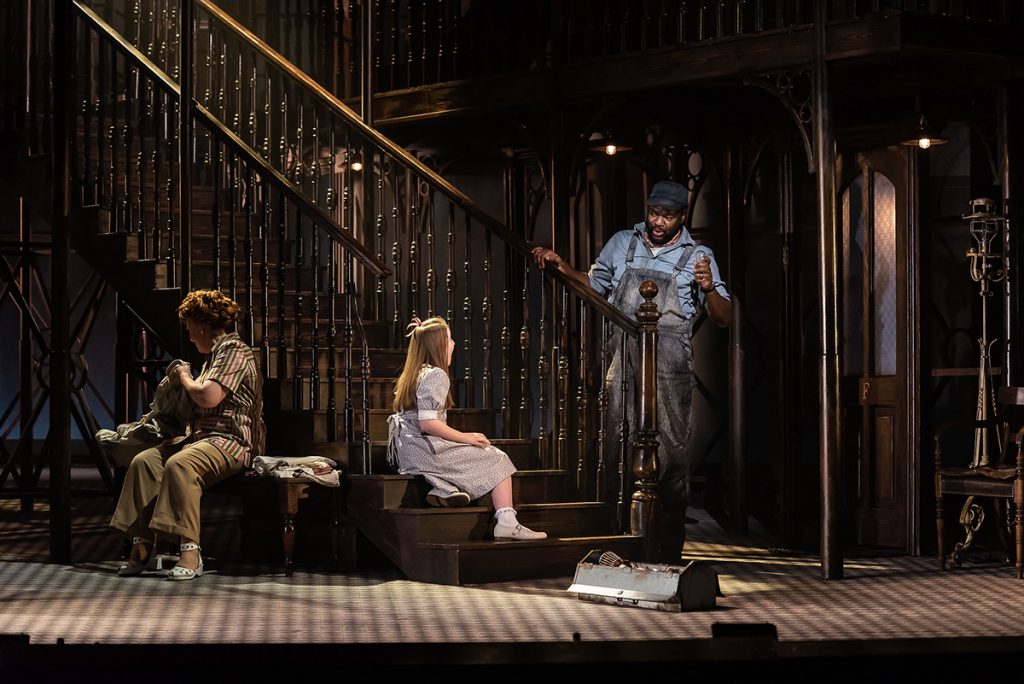
Opera North’s production successfully delivers this balance. It does so by remaining faithful to the original production and making the ‘tenement building’ a central character in the piece. Designer, Francis O’Conner formulates a huge steel tenement block, with its internal components exposed. There is a degree of transparency which enables the audience to be outside the building while seeing what’s inside at the same time.
The overarching thread of Street Scene beautifully blends spoken word and song to move the narrative forward. James Holmes’s conducting prowess merges poignantly with Langston Hughes’s lyrics. Hughes was, incidentally, brought on board specifically because of his ability to capture the vocal rhythm of New York’s working classes.
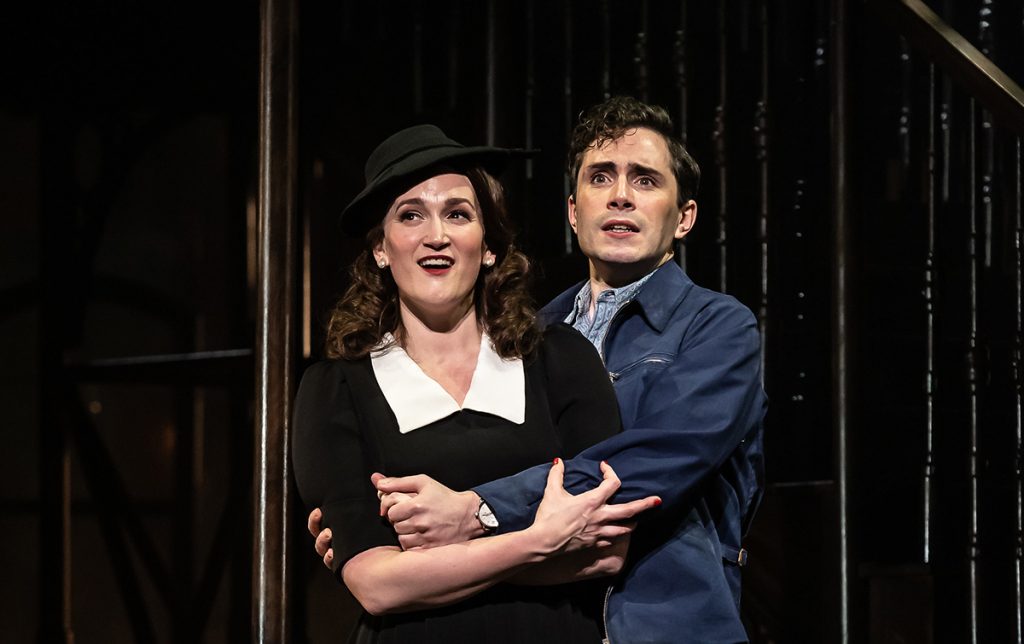
When Anna, Frank or Rose sing, they use common parlance and very often the lyrics they sing are prophetic, revealing their innermost beliefs or the painful circumstance that await them. This is beautifully demonstrated when Anna sings ‘Somehow I Never Could Believe’, a lament about her youth and dreams of love and romance; when Frank sings ‘Let Things Be Like They Always Was’ – a broken man expressing the age-old belief that life was always better in the past; or when Rose sings ‘What Good Would the Moon Be?’ – her inner-conflict, influenced by the suitors who seek her affection and her desire escape the mental prison she’s in.
Choreographer Gary Clarke captures the mood of the times with some beautiful routines. When Mae Jones (Michelle Andrews) and her love interest Dick McGann (Rodney Vubya) dance the Jitter Bug to ‘Moon-faced Starry-eyed’ the audience give a rousing response.
Although conceived in the late 1940s and not generating the box office returns of other lighter shows of the time; Street Scene, a dramatic opera, was a success on its own terms. Opera North’s production is a phenomenal success and proves that this work still has resonance in the 21st century.
★ ★ ★ ★Opera North is at The Lowry, Salford Quays from 10-14 March 2020.
Tue 10 Mar The Marriage of Figaro 7.00pm
Wed 11 Mar The Turn of the Screw 7.30pm
Thu 12 Mar The Marriage of Figaro (audio-described) 7.00pm
Fri 13 Mar Street Scene (captioned) 7.00pm
Sat 14 Mar The Marriage of Figaro 7.00pm
Five reasons why The Turn of the Screw is the scariest opera you’ll ever see.

